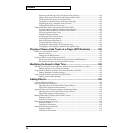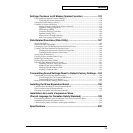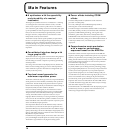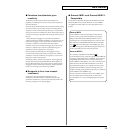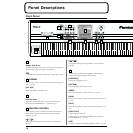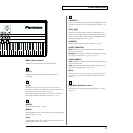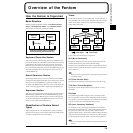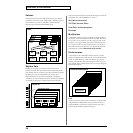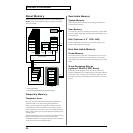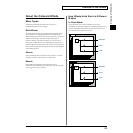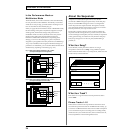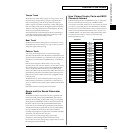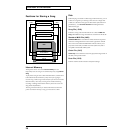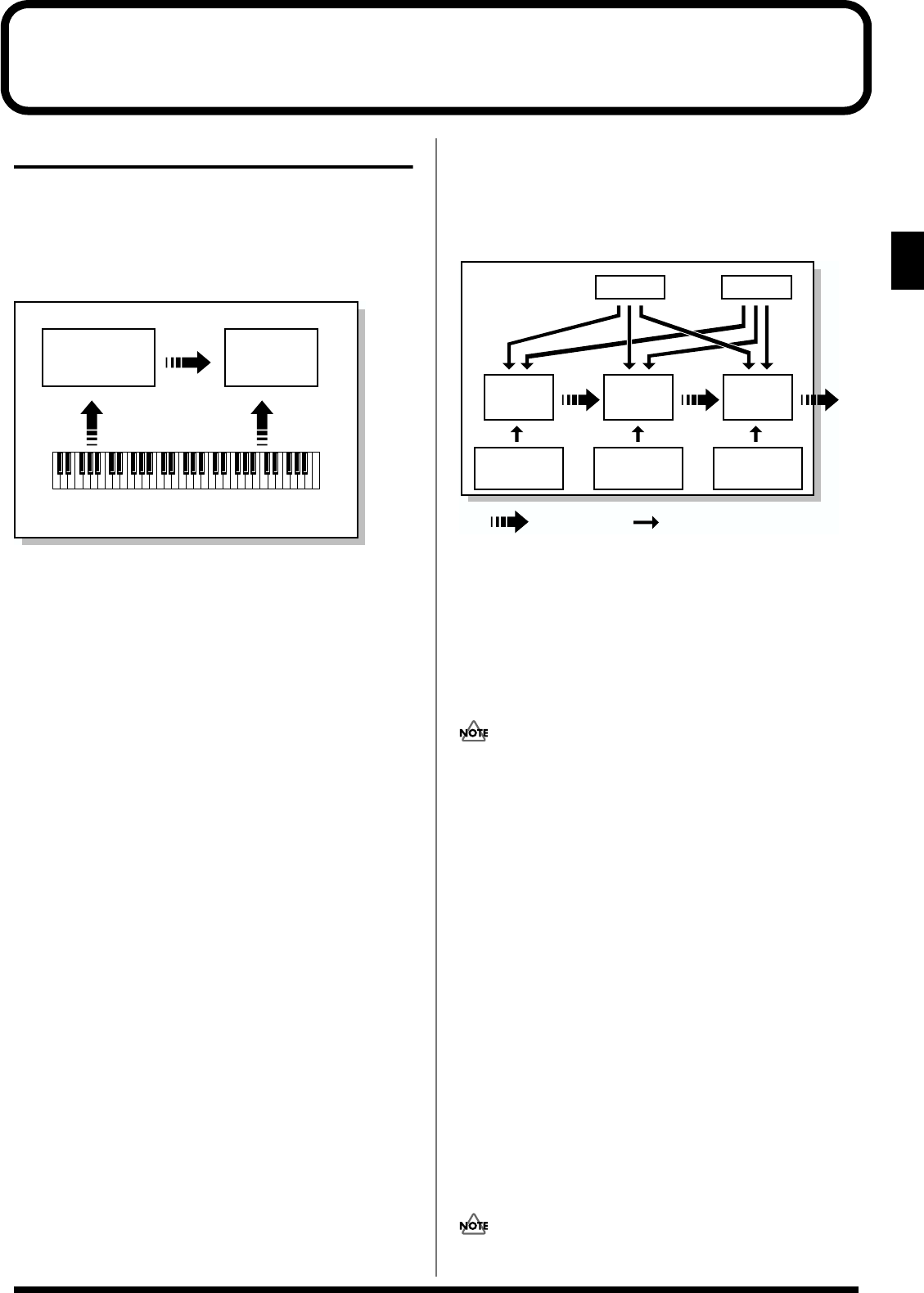
19
Overview of the Fantom
Overview of the Fantom
How the Fantom Is Organized
Basic Structure
Broadly speaking, the Fantom consists of a keyboard controller
section, a sound generator section, and a sequencer section.
These sections are internally connected via MIDI.
fig.01-01.e
Keyboard Controller Section
This section consists of the keyboard, pitch bend/modulation lever,
panel knobs and buttons, and D Beam controller. It also includes any
pedals that may be connected to the rear panel. The performance
information generated when you do things such as press/release a
key, or depress the hold pedal is converted into MIDI messages and
sent to the sound generator section, sequencer section, and/or an
external MIDI device.
Sound Generator Section
The sound generator section produces the sound. It receives MIDI
messages from the keyboard controller section and sequencer section
and/or from an external MIDI device, generates musical sound
according to the MIDI messages that were received, and outputs the
sound as an analog signal from the output jacks or headphone jack.
Sequencer Section
This section records operations of the keyboard controller section as
MIDI messages, and transmits the recorded MIDI messages to the
sound generator section. MIDI messages recorded on the sequencer
can also be transmitted from the MIDI OUT connector to allow the
Fantom to also control external MIDI devices.
Classification of Fantom Sound
Types
When using the Fantom, you will notice that a variety of different
categories come into play when working with sounds. What follows
is a simple explanation of each sound category.
Tones
On the Fantom, the tones are the smallest unit of sound. However, it
is not possible to play a tone by itself. The patch is the unit of sound
which can be played, and the tones are the basic building blocks
which make up the patch.
fig.01-02.e
Tones consist of the following five components.
WG (Wave Generator)
Specifies the PCM waveform (wave) that is the basis of the sound,
and determines how the pitch of the sound will change.
The Fantom has 1,083 different waveforms. All patches built into the
Fantom consist of combinations of tones which are created based on
these waveforms.
There are four wave generators for each rhythm tone (percussion
instrument sounds).
TVF (Time Variant Filter)
Specifies how the frequency components of the sound will change.
TVA (Time Variant Amplifier)
Specifies the volume changes and the sound’s position in a stereo
soundfield.
Envelope
You use Envelope to initiate changes to occur to a sound over time.
There are separate envelopes for Pitch, TVF (filter), and TVA (volume).
For example if you wish to modify the way in which the sound attacks
or decays over time, you would adjust the TVA envelope.
LFO (Low Frequency Oscillator)
Use the LFO to create cyclic changes (modulation) in a sound. The
Fantom has two LFOs. Either one or both can be applied to effect the
WG (pitch), TVF (filter) and/or TVA (volume). When an LFO is
applied to the WG pitch, a vibrato effect is produced. When an LFO is
applied to the TVF cutoff frequency, a wah effect is produced. When
an LFO is applied to the TVA volume, a tremolo effect is produced.
LFO is not included in the rhythm tones (percussion instrument
sounds).
Keyboard Controller Section (controllers
such as keyboard, pitch bend lever, etc.)
Sound
Generator
Section
Recording
Playback
Sequencer
Section
Play
WG
Pitch
Envelope
TVF
TVF
Envelope
TVA
Envelope
TVA
LFO 1 LFO 2
control signal
Tone
audio signal




